The rise of the widespread use of easy-to-operate drones has increased the risk of lethal and incapacitating pharmaceutical-based chemical weapons being dispersed in this new manner. The most immediate concern in the Middle East is that the Islamic Republic or its proxies would use such weapons.
In response, the Institute decided to analyze Iran's work on pharmaceutical based agents (PBAs) and indications of its weaponization of them by assessing Iran's military apparatus and its technical and scientific publications on principally two such agents, fentanyl and medetomidine, along with derivatives. This report provides a comprehensive survey of the research done by IRGC affiliated individuals from 2005 until 2023.
This report discusses multiple Iranian security complexes that have been preparing production of fentanyl and medetomidine based incapacitating and lethal agents. These complexes have been working on pillars of producing those weapons: large-scale cost-efficient synthesis of the compounds with maximum potency, evaluating a stable chemical mixture based on those agents that can be aerosolized using a propellant, and developing the delivery of the agents through grenades, bullets, or drones.
Iran's work has raised concern about their use against civilians and military personnel in Israel and others in the Middle East. An expressed concern is that the use of cannisters of pharmaceutical-based agents in areas of tension or war zones would create instability, harsh military responses, and panic.
Although the issue of pharmaceutical-based chemical agents is not new, their feared use in war theaters, and their easy delivery over both short and long distances by drones, makes the issue urgent. The organs of the Organization for the Prohibition of Chemical Weapons (OPCW) need to put more focus on the legitimate concern of Iran weaponizing PBAs and being non-compliant with the Chemical Weapons Convention. It should also consider whether measures need to be taken for non-compliance. It is important to raise awareness to deter and dissuade further development and use of pharmaceutical based agents.
Background
Several countries have raised the danger posed by pharmaceutical based agents being used offensively as a weapon. These are a category of chemical threat agents that include synthetic opioids. Fentanyl is a potent synthetic opioid that is medically used to treat severe pain but can also cause severe side effects like respiratory depression which can become lethal. Fentanyl is known as an incapacitating agent due to its potency and can also be used as a lethal chemical weapon. Medetomidine, which has emerged more recently, is a central nervous system depressant. It is medically used as a sedative and analgesic in veterinary medicine and is used in combination with other drugs for anesthesia. Although there have not been sufficient studies in determining its full impact, recent reports indicate its presence in patients evaluated for suspected opioid overdoses, highlighting the potential lethality of the compound.[1] It is often found mixed with fentanyl, creating a potent cocktail that complicates the effects and risks of each drug individually. [2]
The 2023 U.S. State Department Annual Report on Compliance with the Chemical Weapons Convention (CWC), specifically mentioned that researchers at Imam Hussain University (IHU) (affiliated with the Islamic Revolutionary Guard Corps) and Malek Ashtar University of Technology (affiliated with the Islamic Republic's Ministry of Defense) have worked on fentanyl and medetomidine, both with "a wide range of sedation, dissociation, and amnestic incapacitating effects." [3]
The United States, among others, has raised the issue of Iran's weaponization of PBA at the OPCW. In a March 2024 statement, Laura Gross, U.S. Representative to the OPCW, stated, "The United States also assesses that since acceding to the CWC, Iran has developed and filled weapons with pharmaceutical-based agents in violation of its obligations to the Convention." [4]The U.S. Treasury department designated Shahid Meisami Group, an organization subordinate to the Organization of Defensive Innovation and Research (also known as SPND). It has projects that include testing and producing chemical agents and optimizing them for effectiveness and toxicity for use as incapacitation agents. [5]
Project Deterrence
To support its conclusion about Iranian violations of the CWC, the United States stated that "on September 28, 2023, a hacker organization published documents online, which they identified as confidential reports from the Iranian regime. The documents explain in detail how to weaponize medetomidine, a pharmaceutical-based agent. These documents confirm our prior concerns about Iranian development of such agents." [6]
The hacked documents describe a project titled "Deterrence." They detail the development of incapacitating ammunition containing medetomidine by the IHU Department of Chemistry. The documents imply a goal of the project as altering the incapacitating agent in the existing ammunition to include medetomidine. The 23 hacked pages appear to be part of a much larger set of documents, presumably containing records of IHU researchers evaluating the military application of different incapacitating technologies. This document reports on advanced stages of testing medetomidine-based ABC-M7A2 and ABC-M7A3 hand grenades and 38mm MK 2 anti-riot munition (see Figures 1 and 2).
Two sections in the documents can be identified. The first section introduces the ammunition by describing their method of operation, material specification, dimensions of parts used, the method of assembling parts and the filler, and standardizing tests. The second section reports on the design of a system for producing incapacitating fillers on a laboratory scale. However, none of the hacked pages cover the second section.
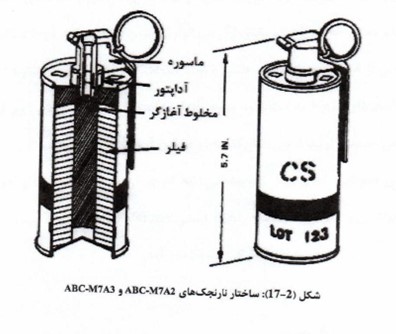
Figure 1. A schematic of the hand grenades used to disperse medetomidine.
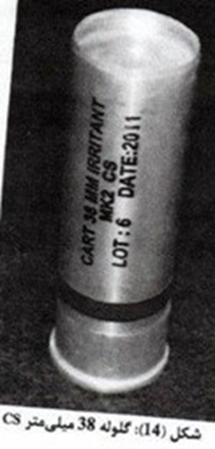
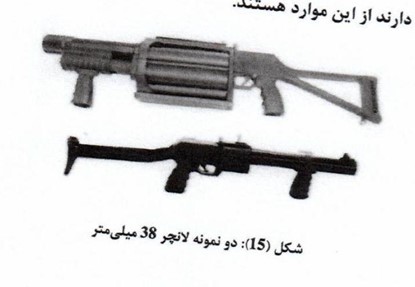
Figure 2. 38mm MK 2 (left) and its launcher (right).
Table 1, translated from the hacked documents, shows the formulation of the various 18g chemical fillers tested in a hand grenade by the IRGC. Potassium perchlorate, lactose, silica, aluminum oxide, binder, and tartaric acid together are supporting agents used to produce heat, combustion, and smoke of the propellant formulation. According to the table, different pyrotechnic mixtures have been tested to ensure reliability and effectiveness of the grenade in parameters such as burn rate, smoke volume, duration, and dispersion. Finally, the M6-40% formulation introduces medetomidine hydrochloride as the incapacitating agent which composes 40 percent of the filler mixture. The common riot-control rounds have a similar composition but the incapacitating agent in them is 2-chlorobenzalmalononitrile also known as CS gas.

Table 1. Smoke dispersion and time in different formulations table from the hacked documents.
In a different set of experiments, three different formulations of medetomidine grenades were tested in open-air conditions. According to the report, among all of the different variations tested, the 40% medetomidine formulation showed satisfactory results in terms of smoke emission, smoke dispersion, and uniform burning.
Although there are no detailed test results available about it, it is reasonable to assume from the introductory section at the end of the available pages about the MK 2 CS cartridge and its launcher (Figure 3) that the same test have been performed using medetomidine-filled MK2 cartridges.
Medetomidine
The Institute found multiple academic studies that indicate the IRGC has been working on militarizing medetomidine as an incapacitating agent. Imam Hussein University Department of Chemistry, and specifically, Hossein Fakhraian of the Department of Chemistry at Imam Hossein University, are at the forefront of these efforts.
Aerosolization Studies
Aerosolization is the underlying mechanism used in both pyrotechnic incapacitating ammunition including tear gas grenades and bullets. The IRGC's work on aerosolizing medetomidine in this area is evidence that the work on this substance is not for medical research.
Hashem Kamranpey from IHU wrote a paper in 2011 titled "aerosolization of medetomidine hydrochloride as an incapacitating agent". [7] In this paper he explores creating a stable mixture containing medetomidine hydrochloride that can be effectively aerosolized dispersing the incapacitating agent through a spray. In order to deploy effectively, they needed to investigate the mixing of all ingredients in a way that they remain stable in a single phase, so the mixture sprays out uniformly.
Another paper from IHU in 2013 expands on the work done in the first paper, testing the use of additional stabilizers to enhance aerosols' effectiveness, stability, and durability under various environmental conditions. This paper titled "investigating the phase behavior of medetomidine hydrochloride, ketamine hydrochloride and sevoflurane in the presence of ethanol and propellant" uses ethanol as the solvent and propane or HFC134a as the refrigerating aerosol propellant. On top of that, the new mixture includes ketamine and sevoflurane. [8]Although this paper does not explicitly talk about the mixture's use as an incapacitating agent, the expressed purpose of this study fits that profile. This research conducts tests to evaluate a stable mixture of medetomidine, ketamine, and sevoflurane that can be aerosolized to particle sizes between 1 to 5 micrometers so it can be effective in penetrating through the lower respiratory tract. Other objectives of the study are to have the most volume of active agents per solvent volume for maximum effectiveness and having maximum propellant efficiency.
Phase Diagram Modeling and Crystal Formation
Medetomidine is a chiral compound that exists in two mirror-image forms, also known as enantiomers with different characteristics. This is important because only one of the two enantiomers is pharmaceutically active. A phase diagram represents the different physical states of a substance (solid, liquid, and gas) under various conditions of temperature, pressure, and concentration and crystallization is the process of forming a solid crystal structure from a liquid or solution. Both of these concepts are important in the study of medetomidine because phase diagrams can predict purity and crystal form. Phase diagrams can guide scientists in achieving crystallization conditions that favor the production of the active enantiomer in its pure form. Study of phase behavior is also significant in evaluating how different mixtures of medetomidine behave under different conditions, crucial for ensuring the functionality and effectiveness of medetomidine containing ammunition.
Hossein Fakhraian of Imam Hossein University and his colleagues at IHU conducted three studies related to the topic of separating the active enantiomer of medetomidine between 2013 and 2016. The first study in 2013 titled "Prediction and experimental determination of the binary and ternary phase diagrams of (±) medetomidine hydrochloride" experimentally verifies the phase diagram for a specific form of medetomidine, medetomidine hydrochloride. [9] This is the form that was researched by Kamranpey and Abazari in their aerosolization studies and was used in the ammunition developed in project Deterrence.
Two other studies by Fakhrian and his team in 2014 and 2016 focused on tailoring the crystallization process under different conditions. [10]
Synthesis, Resolution Techniques, and Derivative Development
IHU has been researching medetomidine synthesis. Fakhraian and his colleagues wrote three papers in 2015 studying the synthesis of medetomidine and achieving enantiomeric resolution which refers to separating the two mirror-image forms (enantiomers) of medetomidine to isolate the desired one.
The first paper "synthesis and enantiomeric resolution of medetomidine" used a combination of chemical reactions to synthesize medetomidine and then applied a technique called enantiomeric resolution with a special focus on high-yield synthesis and isolating the desired enantiomeric effectively and consistently. [11]
The other paper titled "an easy method and two steps for synthesis of medetomidine with high yield" Also by Fakhrian and his colleague at IHU Department of Chemistry, simplified the synthesis of medetomidine, reducing it to just two steps. On top of reaching a high yield, this paper adds a focus on cost-effectiveness and scalability. [12]
The third paper "the Synthesis of medetomidine and Its naphtalenic derivative" focused on the production of medetomidine derivatives with altered molecules that add pharmacological properties while keeping the focus on high-yield and simplicity of synthesis. This enables the researchers to tailor the compound's biological activities, making it an advantageous tool to possibly design weapons. [13]
Together, these three papers provide a profile that fits with the streamlining requirement utilized in producing medetomidine-based ammunition.
Fentanyl
As discussed above, fentanyl is a potent, low-cost, synthetic opioid that is medically used to treat severe pain. It is also distributed on the illegal drug market mixed in with other illicit drugs to increase the potency of the drug, hence, it has the main cause of drug overdose deaths in the United States. [14] Fentanyl and its analogues (which have slightly different structures and accordingly different potency and side effects) are often prescribed in clinical settings because they can relieve intense pain. [15] However, they also cause severe side effects like respiratory depression which can become lethal. [16] In the military context, fentanyl is known as an incapacitating agent due to its potency, and can also be used as a lethal chemical weapon. [17]
The United States investigated a range of incapacitating agents, inter alia through classified medical studies conducted at Edgewood Arsenal in Maryland from 1955 to 1975. [18] As part of these investigations, the U.S. Department of Defense and Department of Justice considered the use of fentanyl as an agent that incapacitates "fast enough to preclude the target from resisting and long enough to enable the target to be disarmed or other objective to be achieved without causing permanent harm." This was to cover the deficiencies of previously weaponized agents such as BZ (other glycolates were also considered) as BZ was easy to spot in the air and the effects could be prevented using a simple cloth. [19]
However, fentanyl has a low margin of safety which describes the gap between the effective dose and the dose that induces life-threatening risk. That is the reason why the United States never weaponized it. The U.S. Army Chemical, Biological, Radiological, and Nuclear (CBRN) program which is the successor to the U.S. Army Chemical Corps who oversaw the Edgewood Arsenal experiments, has acknowledged that the possibility of use of ultra-potent opioids like fentanyl as chemical weapons by terrorists is "very real" and has developed a first responder autoinjector to combat them. [20]
The best-known deployment of fentanyl as a weapon is the Moscow Theater hostage crisis in 2002. During that incident, Chechen terrorists took control of a theater and 880 civilian hostages inside it. The Russian forces tried to take back control by pumping what is reported to be a combination of fentanyl analogues including carfentanil and remifentanil into the theater by drilling holes in the floor and upper vents. [21] Although the Russian security forces were able to storm the theater 15 minutes after pumping the aerosolized mixture and eliminate the terrorists, the effects of the mixture caused the death of 129 hostages. [22] James Ketchum, an Edgewood Arsenal researcher, however, estimates that based on the interior volume of the theater, the amount of fentanyl derivative used, and single digit safety margins of those compounds in humans, the number of deaths should have been higher. [23] This tragic case shows the challenge of controlled incapacitation by fentanyl.
IRGC's Fentanyl Research
Fentanyl has been widely researched by IRGC affiliated persons. The most prominent of those, being Hossein Fakhraian of Imam Hossein University). Fakhraian has published and supervised numerous open-source academic papers studying fentanyl and its analogue compounds since 2005.
One scientific paper attempts to evaluate a framework that can help the researchers develop a fentanyl derivative for weapon purposes. In 2007 Fakhraian and his colleagues presented a paper entitled "Structure-Activity Relationship, Atomic Electron Density and Conformational Investigation of Fentanyl Analogues" at a conference in Moscow citing Russia's use of Fentanyl an incapacitating agent in October 2002 in their presentation. Fakhraian and his coauthors talk about fentanyl as a material "known as non-lethal chemical warfare agents." This paper seeks to establish a structure-activity relationship (SAR) between various fentanyl analogues and their effects to discover "clinically more useful drugs with better pharmaceutical profile such as high potency and less side effects (e. g. respiratory depression and lower addiction potential)." [24] The SAR framework helps scientists understand how changes in fentanyl structure (for example adding a group of atoms) can decrease or increase its various effects such as pain relief and respiratory depression. In addition to this framework aiding the researchers in discovering a medically useful compound, it can also assist with developing a fentanyl derivative for weapon purposes by maximizing the respiratory depressive effect and the duration of action.
Later in 2010, this article was published in IHU's Journal of Advanced Defense Science and Technology of which Fakhraian is now the editor in chief. [25] That journal is published not solely by IHU but in cooperation with the Iranian Scientific Association of Energetic Materials (ISAEM) (or Scientific Association of High-Energy Materials of Iran) which has been associated with the nuclear weaponization work in Iran and the Organization of Defensive Innovation and Research (also known as SPND). [26] Fakhraian is also the editor in chief of ISAEM's Journal of Energetic Materials.
Again in 2018, Fakhraian and his colleague presented a paper at the 7th National Conference on Defense Against Modern Warfare sponsored by SPND, in which they presented the potential use of fentanyl and medetomidine as non-lethal weapons and investigated reliable ways to detect the presence of these compounds. [27] Another paper presented by researchers from IHU's Department of Chemistry at that conference examined ways to detect fentanyl in liquid samples including urine. [28] The method presented in this paper can be used to track the presence of fentanyl in biological samples after exposure.
While not directly related to weapons development, those two papers are significant as they make connections between the work at IHU with SPND and provide two of many pieces of evidence indicating that they have acknowledged the offensive military application of these substances. These papers can also provide insights in a forensic setting evaluating the effectiveness of chemical weapons.
Another study co-authored by Fakhraian, entitled "study of the controlled release and absorption of anesthetic and debilitating sedative drugs and prolongation of their effect using nanoporous substrates" researched advanced drug delivery systems, particularly for anesthetic and sedative drugs of which both fentanyl and medetomidine are examples of.[29] This article examines the utility of drug delivery via nanoporous silica, a material with a structure filled with tiny pores that can store a large amount of drug compared to its size and incrementally release that drug into the environment. In aerosolized form, nanoporous silica loaded with potent agents can be deployed to slowly release lethal doses in environments potentially evading detection or protective countermeasures. Notably, this study was presented at the 3rd National Conference on Defensive Applications of Nanoscience and SPND was one of the sponsors of that conference (see Figure 3).
Fentanyl overdoses can be made harder to treat by adding medetomidine. A September 2024 U.S. study states that fentanyl, when combined with a non-opioid sedative like medetomidine, can neutralize the effect of naloxone, which is used to treat fentanyl overdose, making the agent even more dangerous.[30]

Figure 3. The poster for the 3rd National Conference on Defensive Applications of Nanoscience. You can see the SPND logo in the bottom right corner.
Fentanyl Synthesis
Fakhraian's team along with researchers from Malek Ashtar University have authored a series of three academic papers between 2005 and 2015 on synthesizing 1-(2-phenethyl)-4-piperidone, which is a key intermediate for fentanyl synthesis. These three papers build upon each other in investigating ways to synthesize 1-(2-Phenethyl)-4-Piperidone with a focus on adjusting the process to mass production of this compound.
The first paper titled "two-step protic solvent-catalyzed reaction of phenylethylamine with methyl acrylate" was published in 2005 introducing the concept of combining two ingredients of phenylethylamine (compound 1) and methyl acrylate (compound 2) to produce two other compounds. [31] These new compounds are N-(β-carbomethoxyethyl)phenethylamine (compound 3) and N-bis-(β-carbomethoxyethyl)phenethylamine (compound 4). Compounds 3 and 4 are important intermediates for synthesizing a key fentanyl precursor.
That crucial precursor is 1-(2-Phenethyl)-4-piperidone (compound 5), the topic of the second paper. "Improved Procedure for the Preparation of 1-(2-Phenethyl)-4-piperidone" also written by Fakhraian his colleague at IHU in 2008 builds moves the research forward by using cyclizing compound 4 from the first paper to form compound 5 which is the closest intermediate to fentanyl.[32] Together, these two papers streamline a cost-effective, efficient, and scalable method for synthesizing fentanyl. The authors explicitly reveal in the conclusion that one of the advantages of this process is that "because of low-cost production and mild synthesizing conditions" this process is "suitable for industrial production."
Most recently another paper, this time by researchers from Malek Ashtar University of Technology (MUT) was published in 2015 that attempted to further increase the efficiency and yield of the process established by the first two papers. This paper titled "improved One-Pot Synthesis of 1-(2-Phenethyl)-4-Piperidone Directly from Phenethyl Amine and Methyl Acrylate" simplifies the synthesis the two-step process into a one-pot reaction, where the entire process is performed in a single reaction vessel. [33] The new process bypasses the need for synthesizing compounds 3 and 4 and develops compound 5 directly from compounds 1 and 2.
This demonstrates that there has been a long-term effort by the Islamic Republic's military organizations to help mass produce fentanyl. Additionally, people who are at the center of these efforts are well known to be involved in the regime's weapon development efforts and have had little, if any, to do with civilian medical research in the past.
Evidence exists for the connection between this team at Malek Ashtar and Fakhraian's team at IHU, Hamidreza Ghaeini, a professor at MODAFL's Malek Ashtar University has been a frequent author at IHU, ISAEM and Fakhraian's Journal of Energetic Materials. Notably in one of his papers titled "design and analysis of a mechanism for an eccentric jumping tear gas grenade" Ghaeini and his colleagues analyzed chemical reactions, nozzle design, material selection, and movement of tear gas grenades to improve their effectiveness. This work directly relates to Fakhraian's work at project Deterrence, discussed earlier. [34]
Most recently in 2023, another group of IHU researchers published a paper on an improved synthesis of thiofentanyl which is a fentanyl analogue, and a potent synthetic opioid primarily used in animal anesthesia.[35] This paper follows the trend by emphasizing "high yields, mild reaction conditions, and reduced reaction time," subtly suggesting scalability as an objective of the research.
Figure 4 shows part of the network of people and entities involved in fentanyl research efforts to give a better understanding of the interconnectivity of these projects.
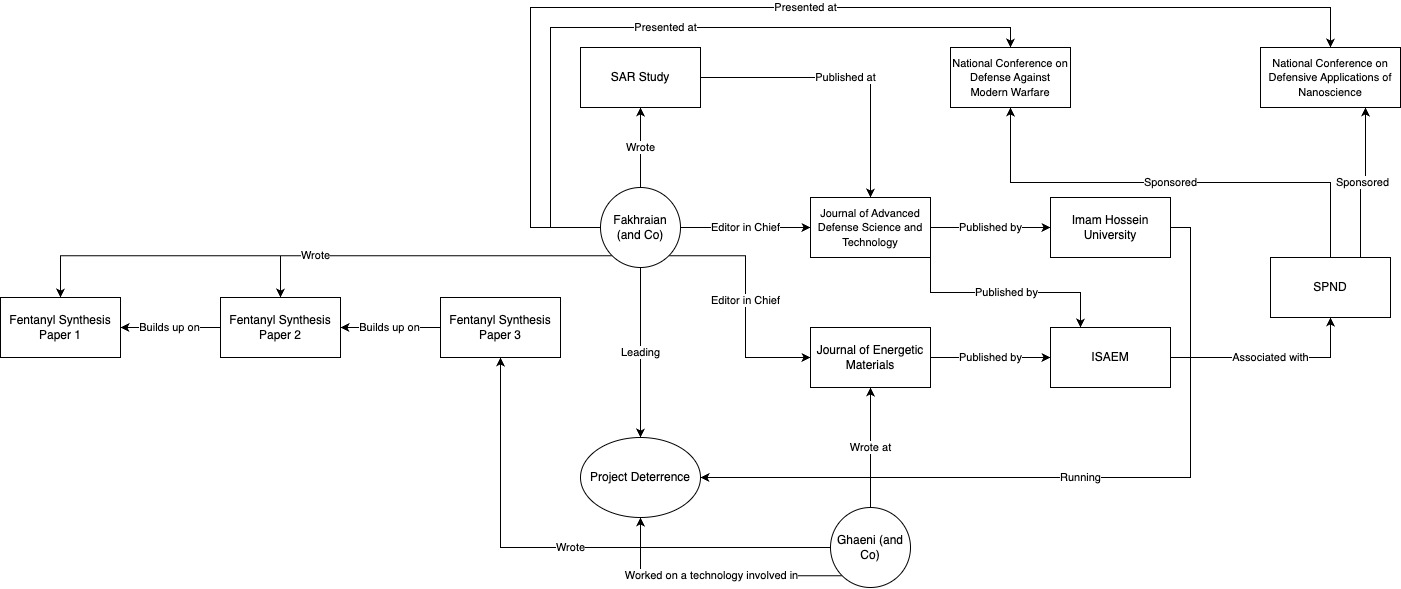
Figure 4. A diagram summarizing part of the information presented demonstrates the need for a holistic view of these efforts.
Delivery and Use
MK 2 Cartridge
During the 2022 Mahsa Amini protests, various persons present at the protests wrote that anti-riot gasses used against them induced feelings of anesthesia which is not a characteristic of traditional CS gas and is associated with both fentanyl and medetomidine.[36] Pictures in multiple Iranian accounts confirm that the MK 2, made by the U.S. sanctioned Shahid Sattari Industries in Iran and mentioned in the hacked documents above, was extensively used against civilians during the 2022 Mahsa Amini protests in Iran (Figure 5). This has increased concerns that the Iranian regime used medetomidine-filled MK 2 cartridges against the civilian protesters.
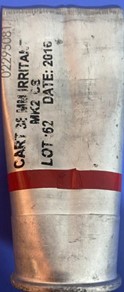
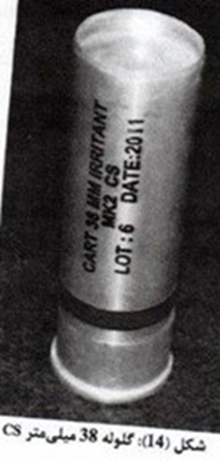
Figure 5. The empty shell used against civilians in Iran, uploaded by an anonymous account on X[37] (left) next to the picture of the cartridge used for medetomidine delivery by IRGC from the hacked documents (right).
Project Arbaeen
Iranian drones could be a potential delivery system for the pharmaceutical based agents. One example drone is a multirotor bomber designed by the IRGC Ground Forces under a project titled "Arbaeen" (Figure 6). It is claimed that it can carry one seven kilogram bomb and ten small grenades. A video demonstrating the operation of this multirotor drone shows that it carries and fires multiple rounds of smoke grenades in addition to a bomb (Figure 7). It is unclear what is the agent used in these grenades but the Farsi word for "tear gas" can be heard as the only intelligible word from the conversation happening in the background of the video, presumably by IRGC officials who are present at the site. [38]
This is an example of an easily operated, inexpensive drone that can be used to deliver ammunition containing PBAs like fentanyl and medetomidine, potentially to kill or seriously injure civilians as well as military forces.
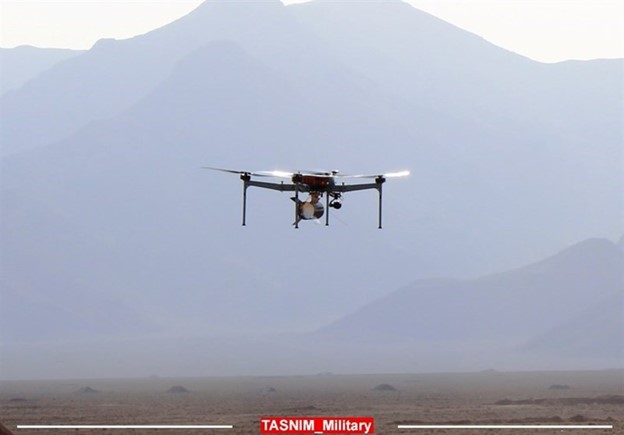
Figure 6. A close up look at the IRGC's multirotor bomber. (Tasnim News)

Figure 7. A screenshot of the drone operation video. The drone is visible in the sky firing rounds of smoke grenades. (Tasnim News)
1. "Notes from the Field: Detection of Medetomidine Among Patients Evaluated in Emergency Departments for Suspected Opioid Overdoses - Missouri, Colorado, and Pennsylvania, September 2020-December 2023," U.S. Department of Health & Human Services, August 1, 2024. [↩]
2. "Toxic Adulterant Alert: Medetomidine/Dexmedetomidine," Fredric Rieders Family Foundation, December 2023. [↩]
3. "2023 Condition (10)(C) Annual Report on Compliance with the Chemical Weapons Convention (CWC)," U.S. Department of State, April 18, 2023. "Technology Assessment: Chemical Weapons," The U.S. Government Accountability Office, September 2023. [↩]
4. Statement by Ms. Laura Gross, U.S Representative to the OPCW at the 105th Session of the Executive Council, March 2024. [↩]
5. "Treasury Designates Entity Subordinate to Iran's Military Firm," U.S. Department of the Treasury, December 3, 2020. [↩]
6. Statement by Ms. Laura Gross, March 2024. [↩]
7. H. Kamranpey, "Aerosolization of Medetomidine Hydrochloride as an Incapacitating Agent," Passive Defence Science and Technology, vol. 3, pp. 51-56, 2011. [↩]
8. M. S. Abazari, "Investigating the phase behavior of medetomidine hydrochloride, ketamine hydrochloride, and sevoflurane in the presence of ethanol and propellant," Passive Defence Science and Technology, vol. 1, pp. 65-70, 2013. [↩]
9. E. Choobdari, H. Fakhraian, and M. H. Peyrovi, "Prediction and experimental determination of the binary and ternary phase diagrams of (±)medetomidine hydrochloride,"Tetrahedron: Asymmetry, vol. 24, issues 13-14, pp. 801-806, Jul. 2013. [↩]
10. E. Choobdari, H. Fakhraian, and M. H. Peyrovi, "Anion effect on the binary and ternary phase diagrams of chiral medetomidine salts and conglomerate crystal formation," Chirality, vol. 26, no. 3, pp. 183-188, Mar. 2014, doi: 10.1002/chir.22299. And H. Fakhraian, M. Salimi, B. Zarenezhad, and E. Choobdari, "Ternary phase diagram modeling of chiral medetomidine salts using NRTL-SAC model," Physical Chemistry Research, vol. 4, no. 4, pp. 663-671, Dec. 2016, doi: 10.22036/pcr.2016.17545. [↩]
11. H. Fakhraian, H. Toulabi, E. Choobdari, M. H. Peyrovi, and H. Hadj Ghanbary, "Synthesis and enantiomeric resolution of medetomidine," Chirality, vol. 27, no. 2, pp. 141-148, Mar. 2015, doi: 10.1002/chir.22412. [↩]
12. H. Toulabi and H. Fakhraian, "An easy method and two steps for synthesis of the medetomidine with high yield," Iranian Journal of Organic Chemistry, vol. 6, no. 3, pp. 1487-1491, 2014. [↩]
13. "The synthesis of medetomidine and its naphtalenic derivative," Organic Chemistry Journal, 2015. [↩]
14. "Are fentanyl overdose deaths rising in the US?" USAFacts Team, September 27, 2023, https://usafacts.org/articles/are-fentanyl-overdose-deaths-rising-in-the-us/. [↩]
15. "Fentanyl," U.S. Drug Enforcement Administration, Accessed on November 20, 2024, https://www.dea.gov/factsheets/fentanyl. [↩]
16. P. F. Basile, M. Bloch, M. H. Proctor, et al., "Efficacy of hypofractionated proton therapy versus conventional photon therapy in the treatment of localized prostate cancer: A randomized phase III trial," Journal of Clinical Oncology, vol. 38, no. 13, pp. 1391-1400, May 2020, doi: 10.1200/JCO.19.01801. [↩]
17. "Fentanyl: Incapacitating Agent," The National Institute for Occupational Safety and Health, May 12, 2011. [↩]
18. "Edgewood/Aberdeen Experiments," U.S. Department of Veterans Affairs, Last Updated September 30, 2024, https://www.publichealth.va.gov/exposures/edgewood-aberdeen/index.asp. [↩]
19. BZ is also known as 3-quinuclidinyl benzilate. This agent was weaponized through the M44 generator cluster but never deployed until dismantling in 1989. J. P. Caves, Jr., "Fentanyl as a Chemical Weapon," Center for the Study of Weapons of Mass Destruction, National Defense University, December 2019. [↩]
20. M. Myers, "DOD-Supported Lifesaving Autoinjector to Combat Ultra-Potent Opioid Exposure Available through DLA," U.S. Army, February 13, 2024. [↩]
21. J. R. Riches, R. W. Read, R. M. Black, N. J. Cooper, and C. M. Timperley, "Analysis of clothing and urine from Moscow theatre siege casualties reveals carfentanil and remifentanil use," Journal of Analytical Toxicology, vol. 36, no. 9, pp. 647-656, Nov. 2012, doi: 10.1093/jat/bks078. [↩]
22. "Moscow theater hostage crisis of 2002," Britannica, Last Updated October 16, 2024. [↩]
23. James S. Ketchum, Chemical Warfare Secrets Almost Forgotten, (Santa Rosa, CA.: ChemBooks Inc., 2006). [↩]
24. H. Fakhraian, T. Nezamoleslam, M. B. Panbehriseh, and B. Javahery, "Structural-activity relationship, atomic electron density and conformational investigation of fentanyl analogues," 4th International Symposium on Computational Methods in Toxicology and Pharmacology Integrating Internet Resources, Moscow, Russia, September 2007.[↩]
25. T. Nezamoleslam, B. Javahery, M. Shakiba Nahad, and H. Fakhraian, "Structure-activity relationship, atomic electron density and conformational investigation of fentanyl analogues," Journal of Advanced Defense Science and Technology, vol. 1, no. 1, pp. 23-32, Jun. 2010.[↩]
26. Akbar Motallebizadeh and Mohammad Ferdowsi, both of whom have been associated with SPND have been board members of ISAEM. Motallebizadeh has been designated by the U.S. Department of Treasury as the head of SPND's Shahid Karimi Group and advisor to Mohsen Fakhrizadeh. "U.S. Government Sanctions Organizations and Individuals in Connection with an Iranian Defense Entity Linked to Iran's Previous Nuclear Weapons Effort," U.S. Department of Treasury, March 22, 2019.[↩]
27. S. S. Abbasi and H. Fakhraian, "Detection of midazolam, medetomidine, and ketamine as hydrochloride salts and fentanyl as citrate salt using colorimetric methods," 7th National Conference on Defense Against Modern Warfare, Tehran, Iran, Aug. 2017. [↩]
28. M. Farajzadeh, M. Rahimi Nasrabadi, and K. Adib, "Preconcentration of fentanyl using dispersive liquid-liquid microextraction and its determination by UV-Vis spectroscopy," 7th National Conference on Defense Against Modern Warfare, Tehran, Iran, Aug. 2017. [↩]
29. O. Hoseinchi Ghara Aghaj, H. Fakhraian, and M. R. Naeimi Jamal, "Study of the controlled release and absorption of anesthetic and debilitating sedative drugs and prolongation of their effect using nanoporous substrates," 3rd National Conference on Defensive Applications of Nanoscience, Tehran, Iran, 2013. [↩]
30. J. J. Palamar and A. J. Krotulski, "Medetomidine infiltrates the US illicit opioid market," JAMA, vol. 332, no. 17, pp. 1425-1426, 2024. [↩]
31. H. Fakhraian and M. Babaie Panbeh Riseh, "Two-step protic solvent-catalyzed reaction of phenylethylamine with methyl acrylate," Organic Preparations and Procedures International, vol. 37, no. 6, pp. 579-584, Dec. 2005, doi: 10.1080/00304940509354990. [↩]
32. H. Fakhraian and M. Babaei Panbeh Riseh, "Improved procedure for the preparation of 1-(2-phenethyl)-4-piperidone," Organic Preparations and Procedures International, vol. 40, no. 3, pp. 307-310, 2008, doi: 10.1080/00304940809458092. [↩]
33. A. Zamani and H. Ghaieni, "Improved One-Pot Synthesis of 1-(2-Phenethyl)-4-Piperidone Directly from Phenethyl Amine and Methyl Acrylate," 2015. [↩]
34. H. Souri, H. Ghaeni, and S. M. R. Fallah Alipour Zare, "Design of mechanism of the off-center skittering for skitter grenade," Journal of Energetic Materials, vol. 11, no. 2, pp. 63-72, 2016. [↩]
35. M. J. Taghizadeh, S. J. Hosseini, S. M. Moosavi, and H. Parsa, "Improved method for the total synthesis of thiofentanyl," Journal of Heterocyclic Chemistry, vol. 60, no. 6, pp. 950-956, Jun. 2023. [↩]
36. Toomaj Salehi, X.com, September 22, 2022, https://x.com/OfficialToomaj/status/1572863136058994694. [↩]
37. @tired_phantom, X.com, September 21, 2022, https://x.com/tired_phantom/status/1572632907575087104. [↩]
38. "The IRGC Ground Forces' Miltirotor Bomber Successfully Tested," Tasnim News, June 11, 2023, https://tn.ai/2905593. [↩]






